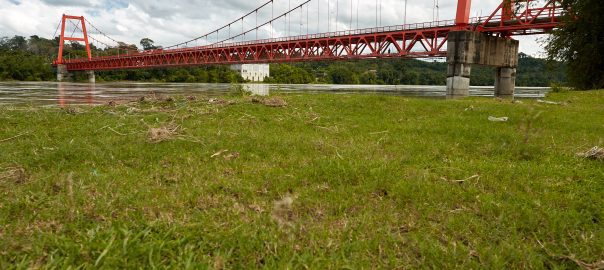The presence of abandoned Japanese tunnels in many parts of the country also became urban legends and telltales about haunted places, the Yamashita treasure and the interests of some treasure hunters, and many chilling stories of death and suffering told across generations.
During the Second World War, the Japanese imperial army bore tunnels using manual and hard labor involving Filipino prisoners of war and Japanese conscripts. The tunnels served as a hideout for Japanese soldiers to escape the eyes of American and Filipino soldiers. It was also a way for their covert operations.
The Japanese tunnels offer a unique experience to intrepid travelers who enjoy adventures and explorations. This was designed like a network of branching and intersecting tunnels. In the middle part of the tunnel, you can find a water-filed well.
The sandy beds of the Cagayan River make it suitable for shellfish to thrive. Archeological studies confirm that the gathering of clams in this part of Cagayan dates back to the Neolithic age.
There are several shell middens in barangays of San Lorenzo, Catugan, and Alaguia, Sta. Maria, Catayauan, Magapit, and Bangag. In Magapit, the shell middens are at the top of the hill. The deposit is 800 meters from the riverbank and has a panoramic view of the Cagayan River. Bangag shell midden sits on the Magapit site. This site has a deposit of 100 meters in diameter and 2.8 meters (9 feet).
About four (4) kilometers from Lal-lo are the Catayauan shell middens. The deposit extends about 500 meters long, 100 meters wide, and two meters deep. Not so far from Catayauan is the Santa Maria shell midden deposits. The middens are located upstream Cagayan River with a distance ranging from 30 to 50 meters that stretches up to one (1) kilometer. Other locations include the riverbanks of San Lorenzo, Catugan, and Alaguia. Accompanying the discovery of shell middens in these sites is the unearthing of various stone tools, pottery sherds, and earthenware. These indicate Neolithic Age when the early people started domesticating animals, planting crops, and developing craftsmanship by making tools, pottery, and other home implements. These are critical findings in establishing the presence of communities in pre-historic Cagayan.
The Tocolana Church was built during the 17th century but faced nature’s wrath over time. It collapsed during the November 30, 1619 earthquake. After its rebuilding, it continued to suffer from the ravages of nature like the flood of 1687, earthquake (1721), typhoon (1845), and earthquake (2022). The Compaña General de Tabacos Filipinas (1881) repurposed the complex and the remaining foundation by building its offices and warehouse for tobacco products. This complex did not survive the shelling of the American Air Force during the Second World War in 1945.
Since then, the church complex has not been restored and continued to be decrepit until its recognition as a place of historical and cultural significance.
Today the Tocolana Church ruins take pride in having well-kept lawns and charming flower gardens that visitors can enjoy.










